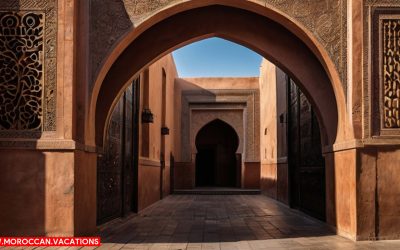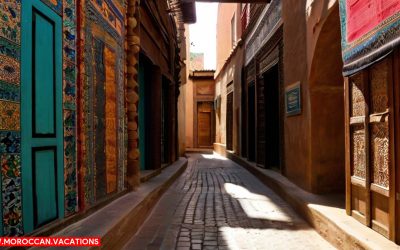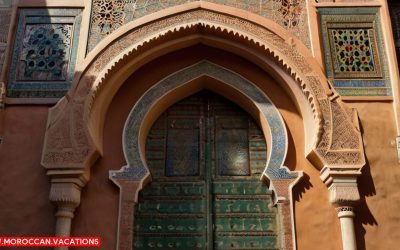Prehistoric Beginnings: Morocco’s Origins
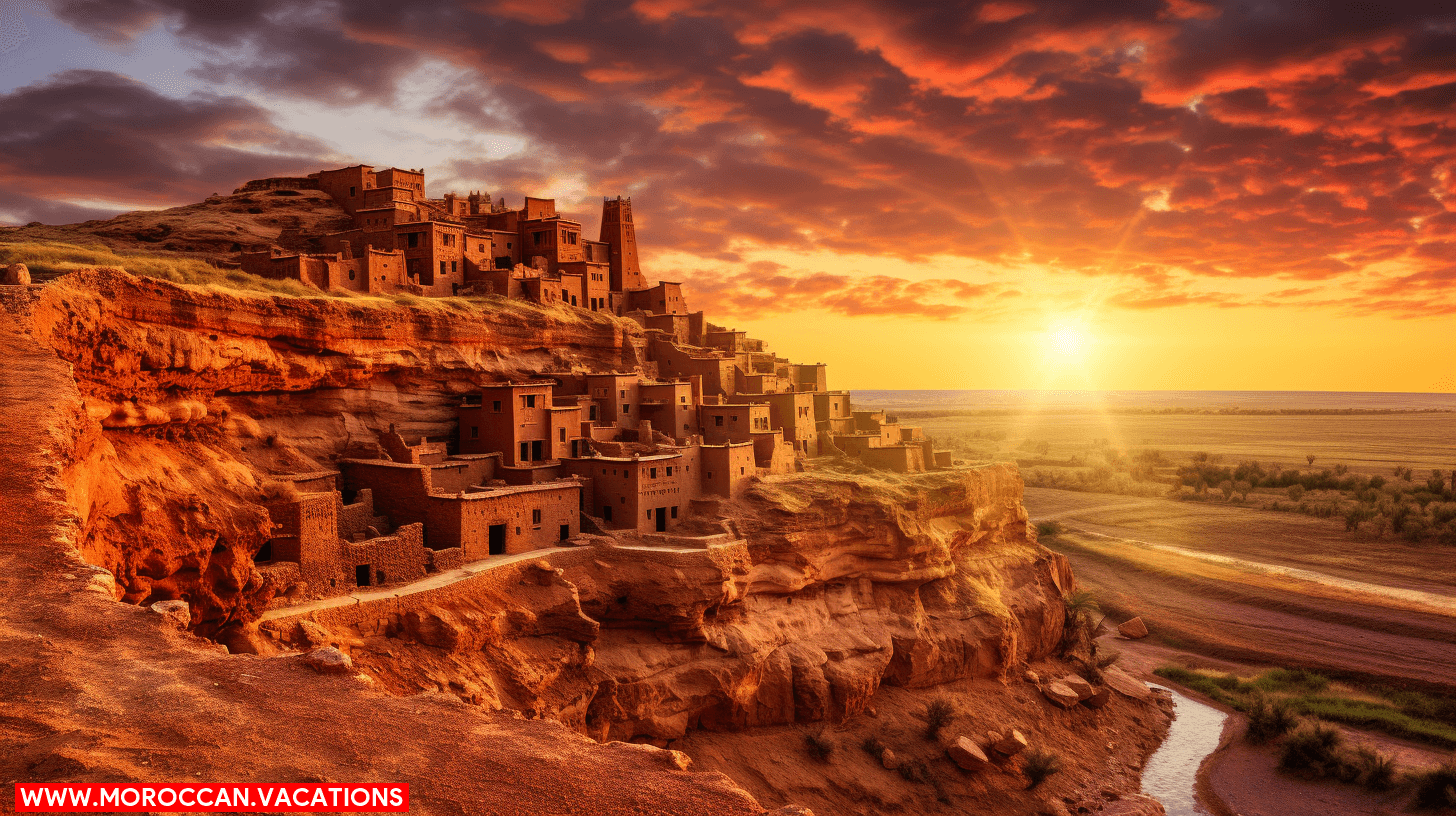

Did you know Morocco boasts 9 UNESCO World Heritage sites? You’re about to embark on a fascinating journey through time, exploring Morocco’s rich history and unique architecture. You’ll discover the resilience of Berber constructions, the Islamic influences, and the modern architectural renaissance. You’re not just learning about structures, you’re stepping into stories etched in stone. Get ready, it’s time to unravel the architectural wonders of Morocco.
In your exploration of Morocco’s deep-rooted history, you’ll find that it begins in the prehistoric era, with settlements dating back over 100,000 years. This period, shrouded in mystery and time, speaks volumes about the resilience and innovation of early human societies. Now, imagine yourself stepping into one of these ancient settlements, feeling the thrill of discovery and the weight of history.
You’d come across cave artifacts that offer a glimpse into the lives of our distant ancestors. These artifacts, including tools and primitive art, speak volumes about the skills and ingenuity of prehistoric Moroccans. Their ability to adapt and innovate in a harsh and demanding environment is truly remarkable.
Moving on, you’d encounter remnants of Neolithic settlements. These settlements, characterized by rudimentary houses and farming implements, signal the dawn of a new era. Here, you can see the transition from nomadic lifestyles to settled farming communities. This shift didn’t just alter their way of life, but also set the stage for the development of complex societies and civilizations.
In essence, Morocco’s history is a testament to the unyielding spirit of humanity. It’s a narrative of survival, adaptation, and progress, a story that continues to unfold and inspire.
Berber Constructions: Symbol of Resilience
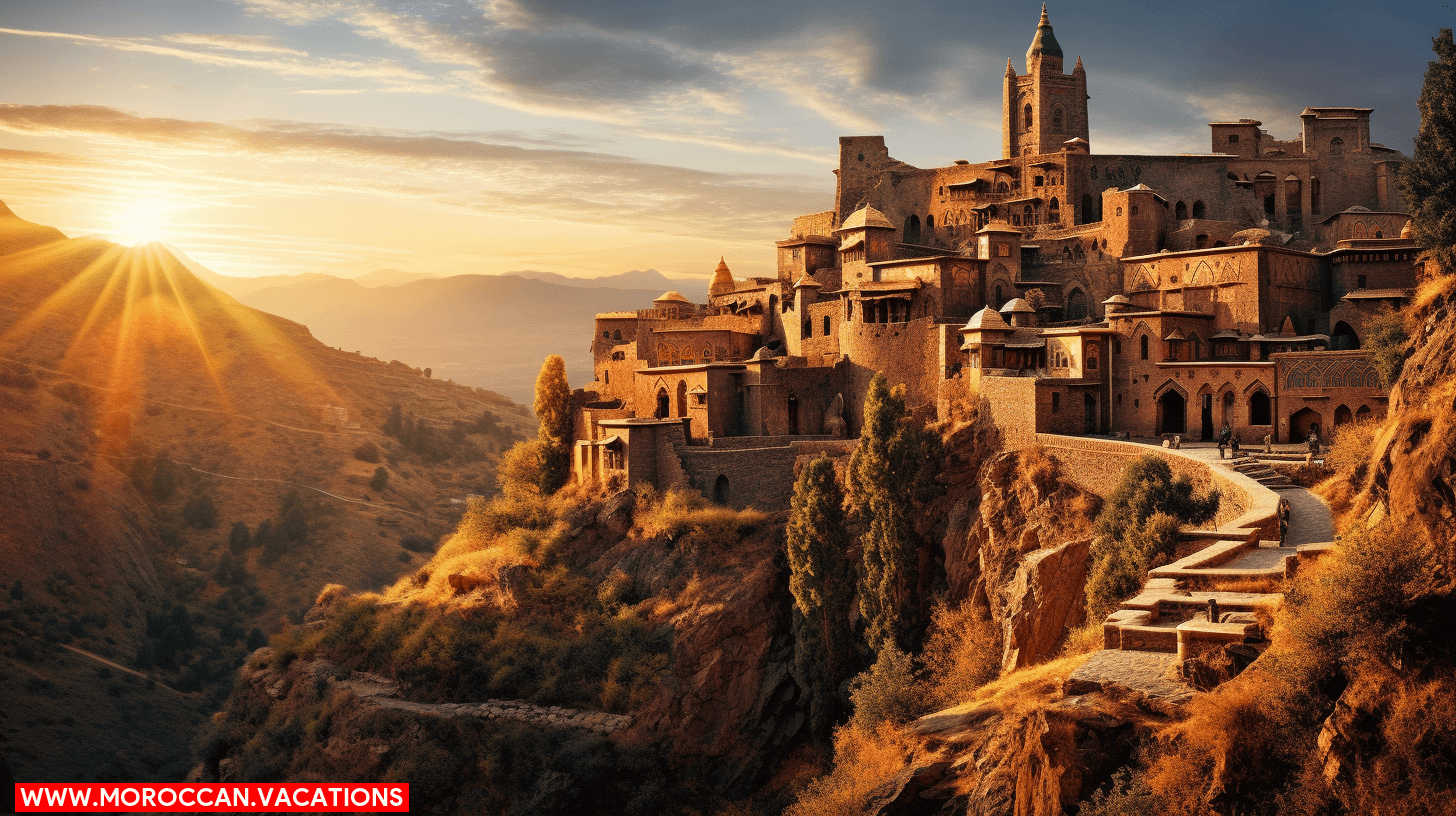

As you delve deeper into Morocco’s history, you’ll encounter countless Berber constructions, their resilience and architectural prowess etched in every stone. These buildings stand as a testament to the Berber’s enduring spirit and symbolize their rich cultural history. The architectural durability of these structures is nothing short of remarkable, reflecting the Berber’s ability to withstand the test of time.
The Berber symbolism found in these constructions is deeply rooted in their traditions. The geometric patterns often seen on their walls aren’t just for aesthetic appeal; they’re symbolic representations of the Berber’s beliefs and values. You’ll also notice how these constructions seamlessly blend with the natural environment, a testament to the Berber’s deep respect for nature.
These constructions aren’t just buildings; they’re living history, each bearing the marks of the Berber’s struggles and triumphs. They’re a testament to the Berber’s resilience, providing insights into their past and their enduring spirit. Despite the harsh conditions and numerous invasions they faced, the Berbers have managed to preserve their cultural legacy through their constructions. So, as you marvel at these architectural wonders, remember they’re not just structures, but symbols of resilience.
Islamic Influence on Moroccan Architecture


Shifting your gaze from the resilient Berber constructions, you’ll soon discover the profound Islamic influence that’s deeply woven into the tapestry of Morocco’s architectural landscape. This influence is not a singular entity but a vibrant synthesis of diverse elements sourced from various Islamic civilizations.
You’ll notice the clear Ottoman influence in the intricacies of the geometric patterns adorning the medina walls, a style that’s been cherished and preserved over centuries. Yet, the Ottoman’s weren’t the sole contributors to this architectural symphony. Persian inspirations are evident in the ornate plasterwork and the garden designs, reflecting an Islamic aesthetic that’s all about harmony, balance, and unity.
The fusion of these influences has given birth to a unique architectural language that’s inherently Moroccan, yet unmistakably Islamic. The ubiquitous zellige tiling, the iconic muqarnas muqarnasvaulting, and the grand archways are essentially Islamic, but their expression in Morocco is distinctly local.
The Architectural Marvels of Marrakesh
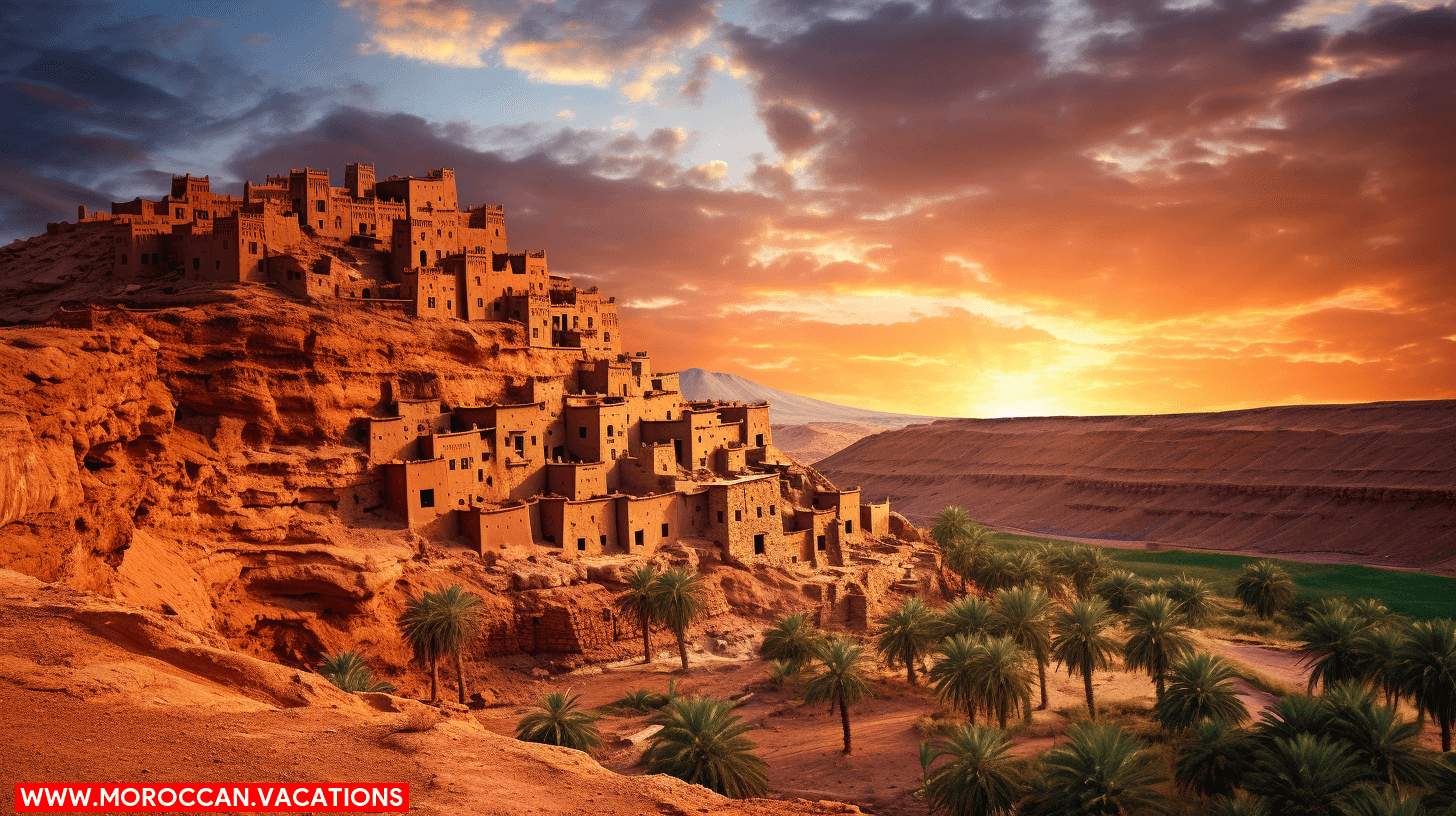

Now, you’ll find numerous architectural wonders awaiting your discovery in the city of Marrakesh. The Marrakesh palaces exploration will lead you through an array of stunning royal structures. The Bahia Palace, for instance, is a brilliant testament to the Moroccan architectural prowess. Its intricate designs and detailed craftsmanship will leave you in awe.
Your journey doesn’t end there. The Riad architecture analysis gives you a deeper understanding of traditional Moroccan homes. Riads are usually two or three stories, built around a central courtyard. The meticulous use of mosaics, woodwork, and stucco is a sight to behold. These spaces are private, peaceful havens, providing an escape from the hustle and bustle of the medina.
The Koutoubia Mosque, with its imposing minaret, is another architectural marvel. It’s the largest mosque in Marrakesh, and its design served as an inspiration for other prominent buildings, like the Giralda in Seville.
As you take this journey through Marrakesh, you’ll gain a new appreciation for the city’s unique architectural heritage. You’re not just observing buildings – you’re witnessing the transformation of Moroccan culture over time.
The Almohad and Merinid Dynasties
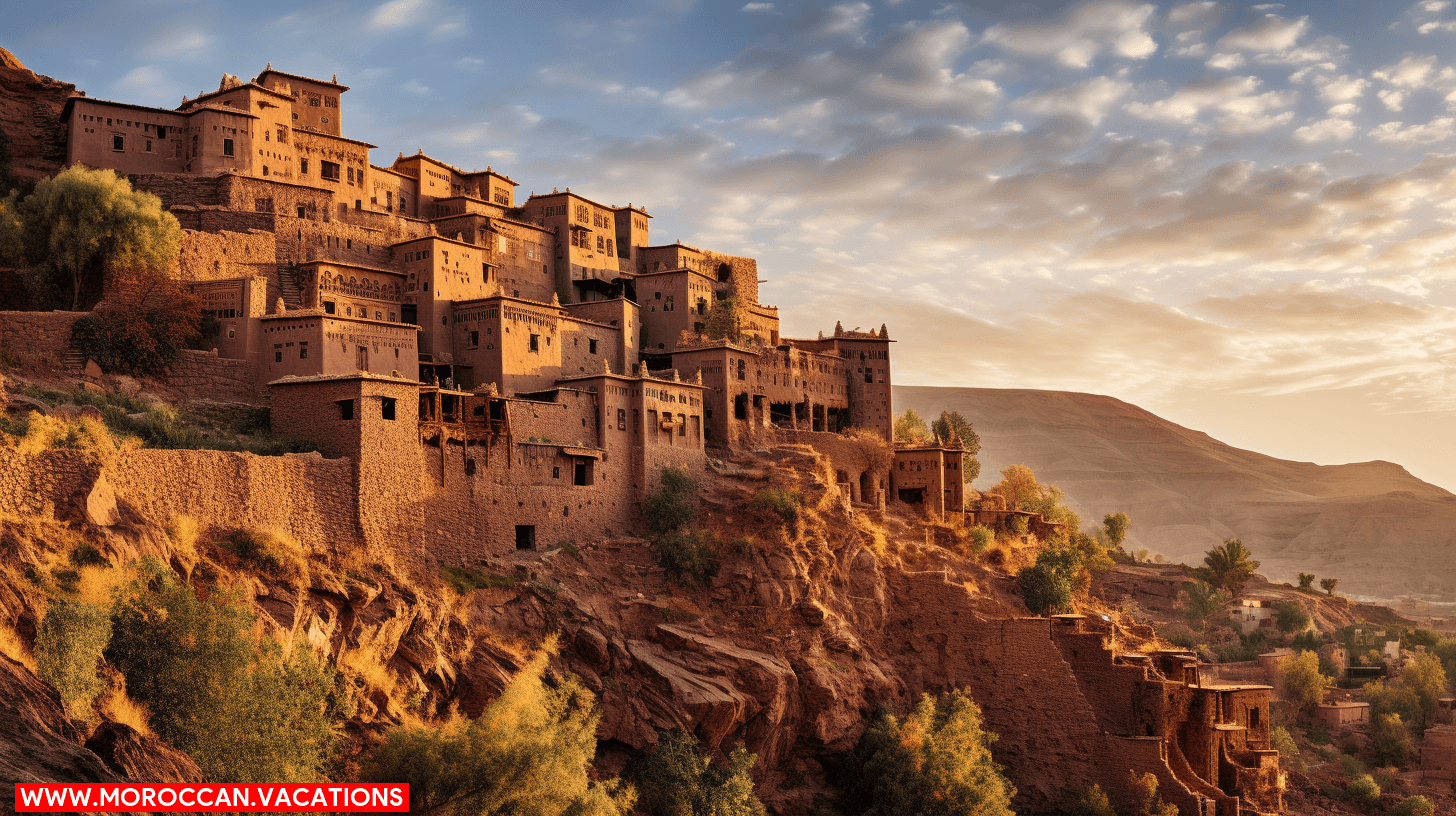

Continuing your exploration, you’ll delve into the impactful eras of the Almohad and Merinid Dynasties, which played pivotal roles in shaping Morocco’s architectural landscape
The Almohad Dynasty, with its innovative military strategies, dominated Morocco from the 12th to the 13th century. 1. The Almohad military strategies were forward-thinking, preferring defense structures like fortified walls and watchtowers, which are still evident in Morocco’s architectural landscape today. 2. Their reign also saw the construction of the iconic Koutoubia Mosque in Marrakesh, a testament to their architectural prowess and innovative engineering skills.
Then came the Merinid Dynasty, ruling from the 13th to the 15th century. Their cultural influence was profound, as they championed education and arts. 3. The Merinid Dynasty established madrasas (educational institutions) across Morocco, infusing their love for knowledge into the architectural framework.
These dynasties weren’t just political entities; they were visionary architects, leaving enduring imprints on Morocco’s architectural landscape. Through their military strategies and cultural influences, the Almohad and Merinid Dynasties infused freedom into the very bricks and mortar of Morocco, shaping a nation that still resonates with their legacy today.
European Intervention: Colonial Era Impact
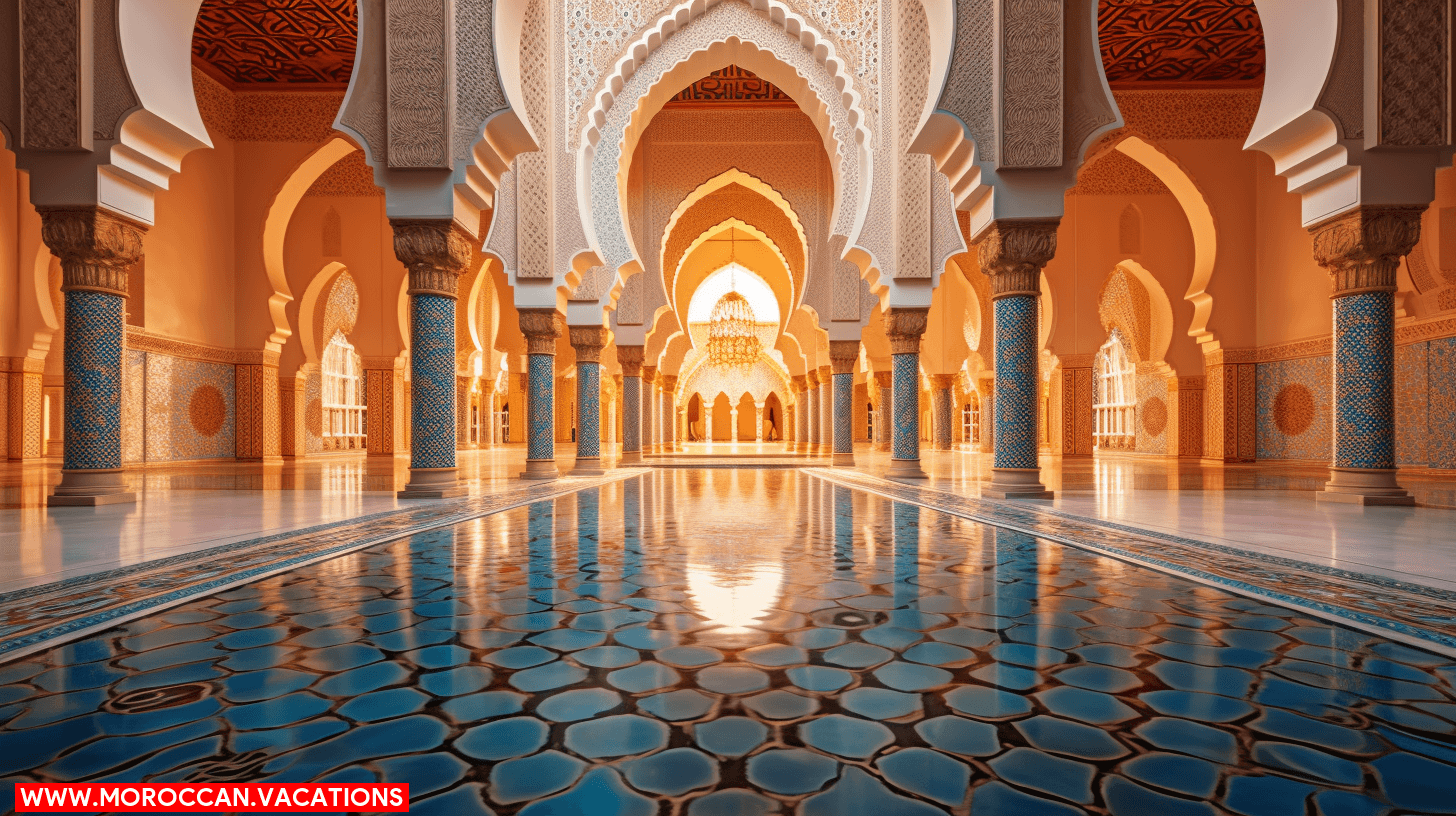

As you journey further through Morocco’s architectural timeline, you’ll encounter the indelible marks of European intervention, particularly during the colonial era. The Colonial Influence is most noticeable in the larger cities, where French Elements are woven into the architectural fabric.
Take Casablanca, for instance. The city’s Ville Nouvelle, designed by French architect Henri Prost, is a perfect illustration of the fusion of Moroccan and French aesthetics. There, you’ll find broad boulevards lined with buildings adorned with European-style facades mixed with traditional Moroccan decorative elements.
| City | Architectural Feature | Origin |
| Casablanca | Ville Nouvelle | French |
| Rabat | Art Deco Buildings | French |
| Marrakesh | Majorelle Garden | French |
However, it’s not just the architecture that bears the stamp of the French. The colonial era also introduced new urban planning concepts, which continue to shape Morocco’s cities today. This period of history has undoubtedly left a significant imprint on Morocco, a testament to the country’s ability to adapt, absorb, and transform foreign influences into its own vibrant cultural and architectural identity.
Post-Independence Architectural Renaissance
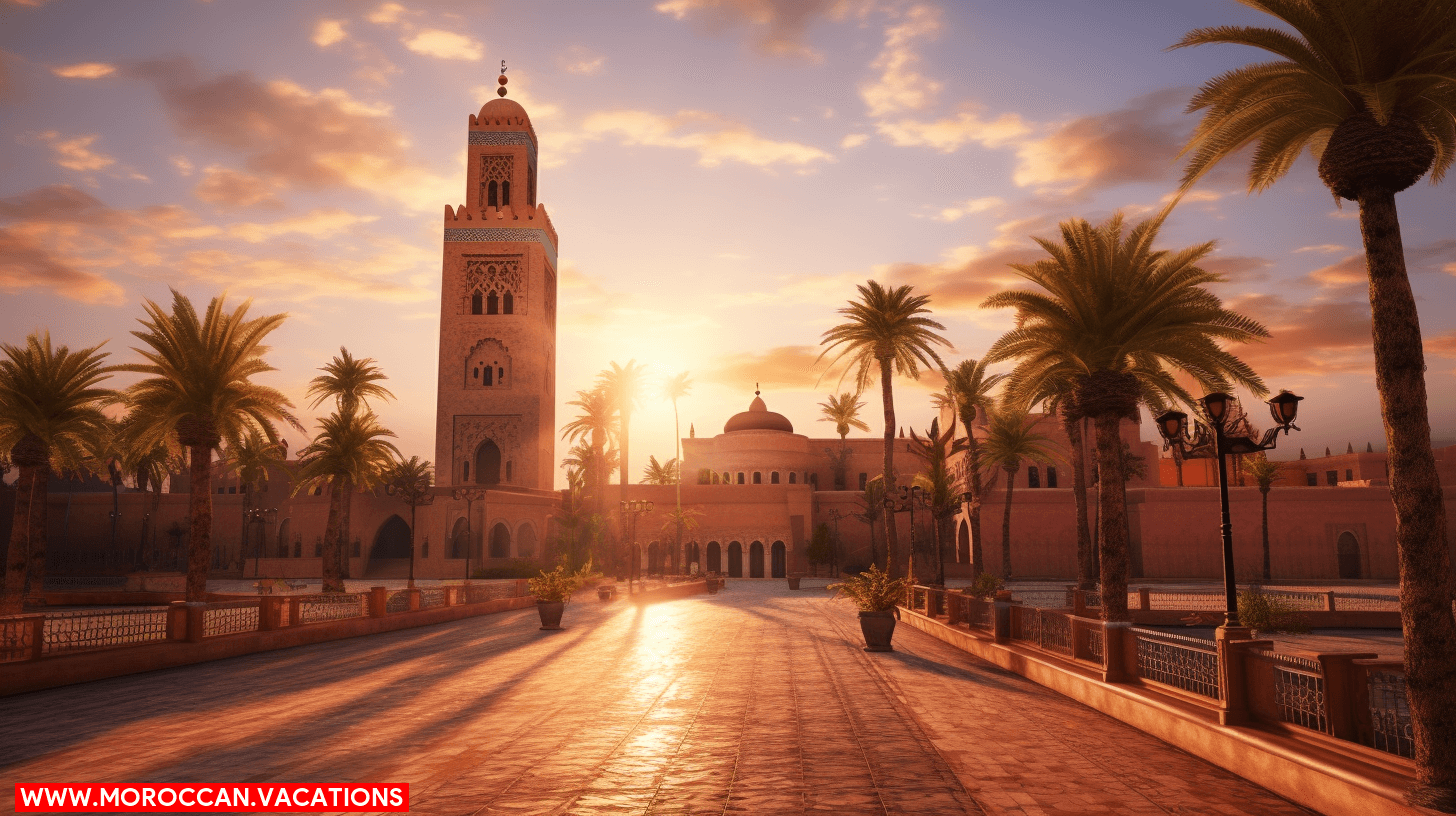

Venturing beyond the colonial era, you’ll witness a remarkable architectural renaissance that emerged in Morocco post-independence. This period, known as the Independence Era Revival, brought a renewed spirit of freedom and national identity that manifested in the nation’s architecture.
Three key elements mark this revival:
- The embrace of ‘Post colonial Urbanism’ – a shift from European architectural influences to a more indigenous style, reclaiming the country’s rich heritage and cultural identity.
- The rise of modernist architecture – an embrace of modern technology and materials, while still incorporating traditional Moroccan design elements.
- The creation of new public spaces – urban development that fostered community interaction and public engagement, reinforcing the spirit of independence.
You’ll find that Morocco’s post-independence architecture is not a mere reflection of form and function, but an expression of a newfound sense of self. It stands as a testament to the resilience of a nation that has withstood centuries of foreign domination and emerged with a renewed sense of pride and identity.
This architectural renaissance encapsulates the spirit of a nation reborn, eager to move forward while still honouring its past. A tangible symbol of freedom, independence, and the relentless drive of a people to define their own destiny.
Moroccan Architecture: Unique Materials and Techniques
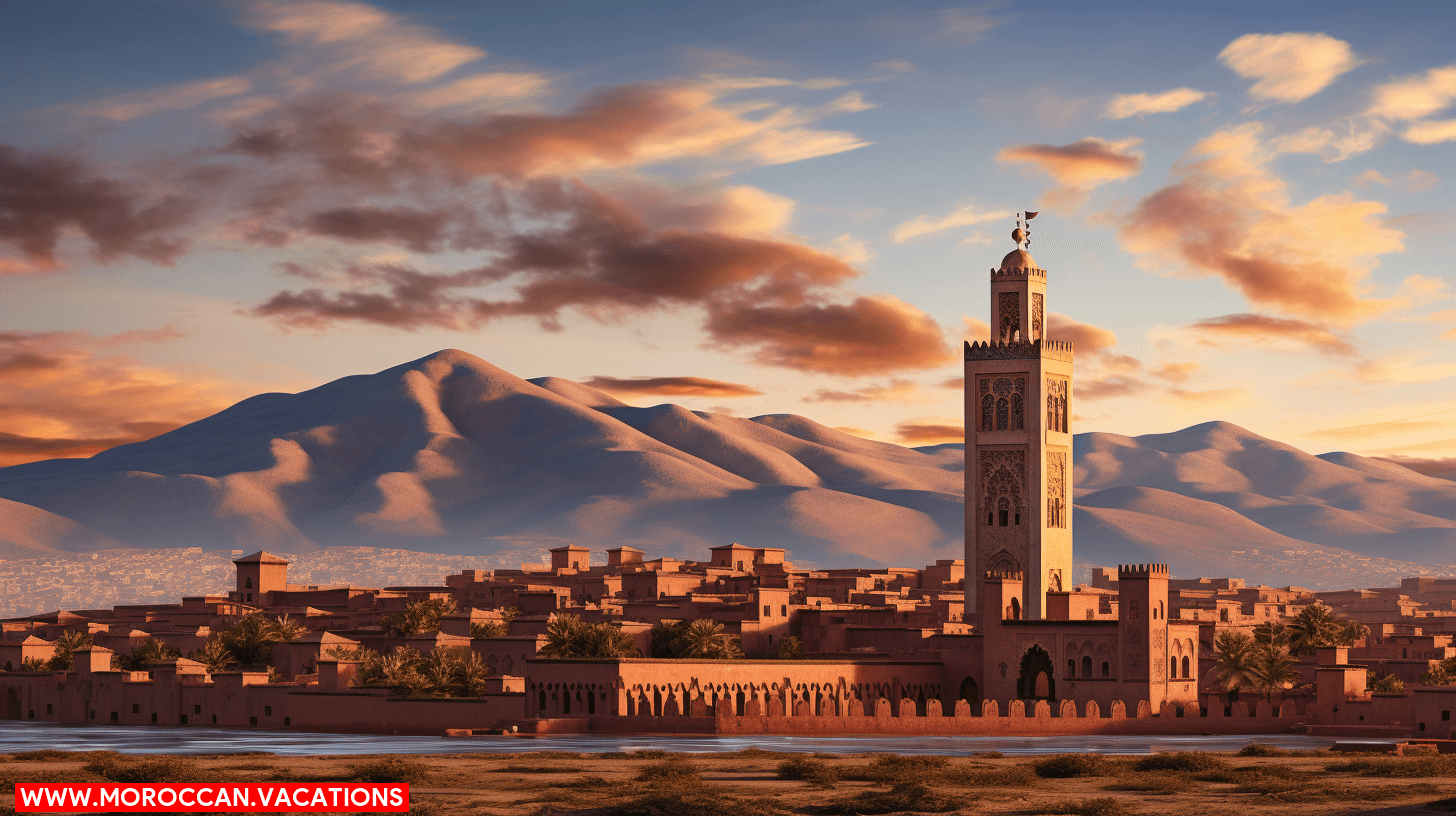

Diving into the intricacies of Moroccan architecture, you’ll immediately notice the unique materials and techniques that set it apart, embodying the nation’s rich cultural tapestry in every structure. The use of sustainable materials like clay and wood, harnessed through traditional techniques, highlights the balance between aesthetic beauty and environmental responsibility. You’ll see that the Moroccan architectural ethos is one that merges functionality with artistry, emphasizing sustainability without compromising style.
Now, let’s look closer at the mosaic artistry, an epitome of Moroccan craftsmanship. Zellige, as it’s known, involves arranging carefully chiseled tiles into complex geometric patterns, an art form that flourishes in many Moroccan buildings. This exquisite detailing mirrors the nation’s affinity for intricate design, symbolizing a culture that values the beauty of the tiniest details.
Moreover, the use of tadelakt, a waterproof plaster made from lime, manifests the locals’ ingenuity. This material, smooth and lustrous, gives Moroccan architecture its characteristic sheen, while offering durability and versatility.
In essence, Moroccan architecture is a testament to the nation’s respect for the environment, commitment to sustainable materials, and dedication to preserving their ancestral techniques. It’s a journey through time, showcasing a legacy of architectural excellence that continues to evolve.
Modernism and Morocco: The Contemporary Scene
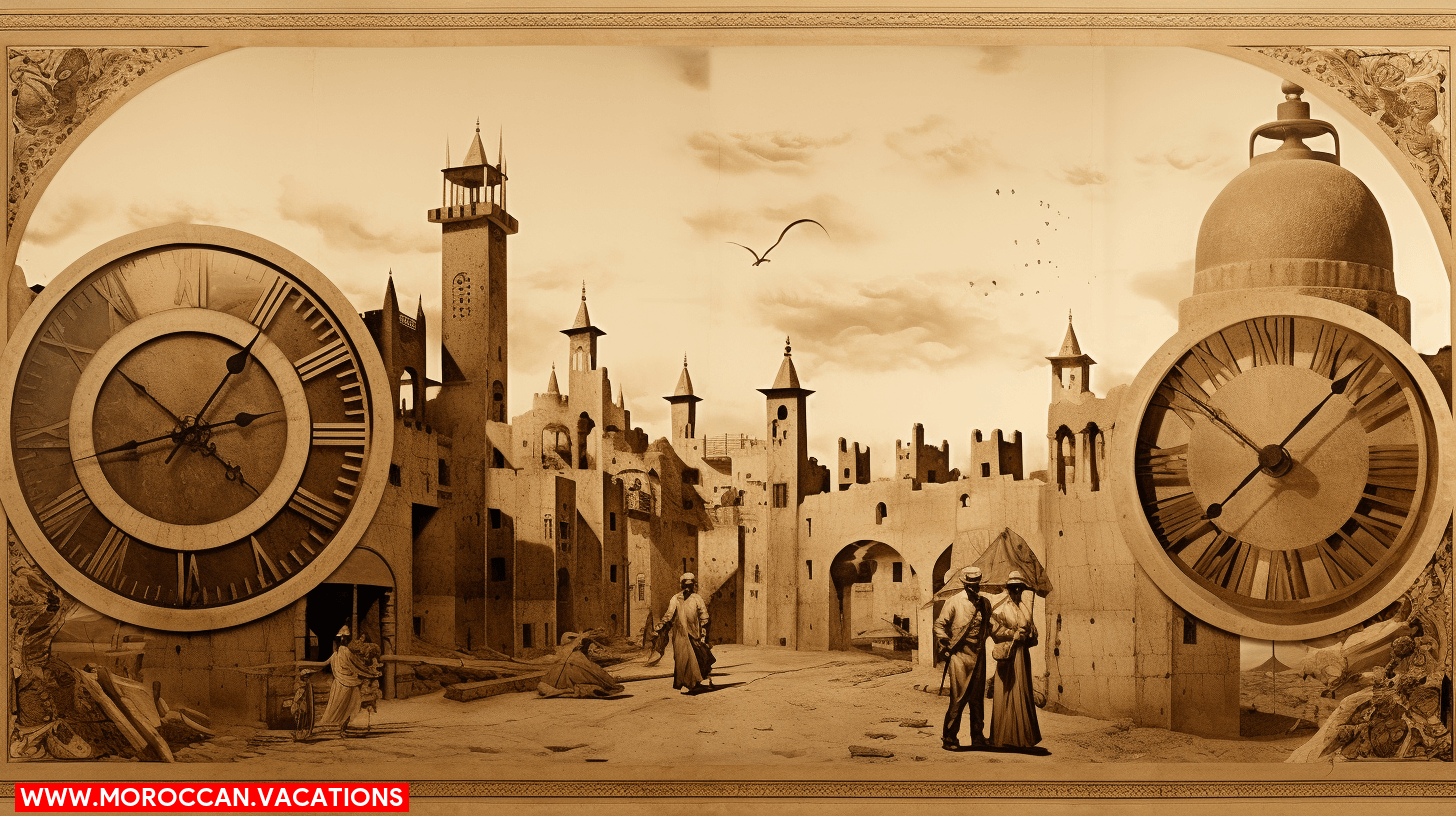

Now, let’s delve into the contemporary scene, where you’ll find that modernism has truly made its mark on Moroccan architecture. As a lover of freedom, you’ll appreciate how this progressive movement has altered the architectural face of the country, while still respecting its rich history and traditions.
- Modernist Influences in Moroccan Art: You’ll see modernism’s footprint in the form of abstract shapes and freedom of expression in Moroccan art. Artists have adopted international styles, yet incorporated local elements, creating a fusion that’s uniquely Moroccan.
- Contemporary Moroccan Urbanism: The influence of modernism is also seen in city development. Improved infrastructure and innovative building designs are redefining cityscapes while enhancing living standards.
- Modern Moroccan Architecture: Modernism is now a significant architectural style in Morocco, seen in state-of-the-art buildings that blend traditional Moroccan designs with modern aesthetics.
In this era of transformation, it’s thrilling to see how the past and the present coexist harmoniously. The fusion of modernist influences in Moroccan art and contemporary urbanism with traditional aesthetics is a testament to Morocco’s ability to evolve while honoring its heritage. This interplay of old and new is what makes Morocco’s contemporary scene so captivating.
The Future of Moroccan Design
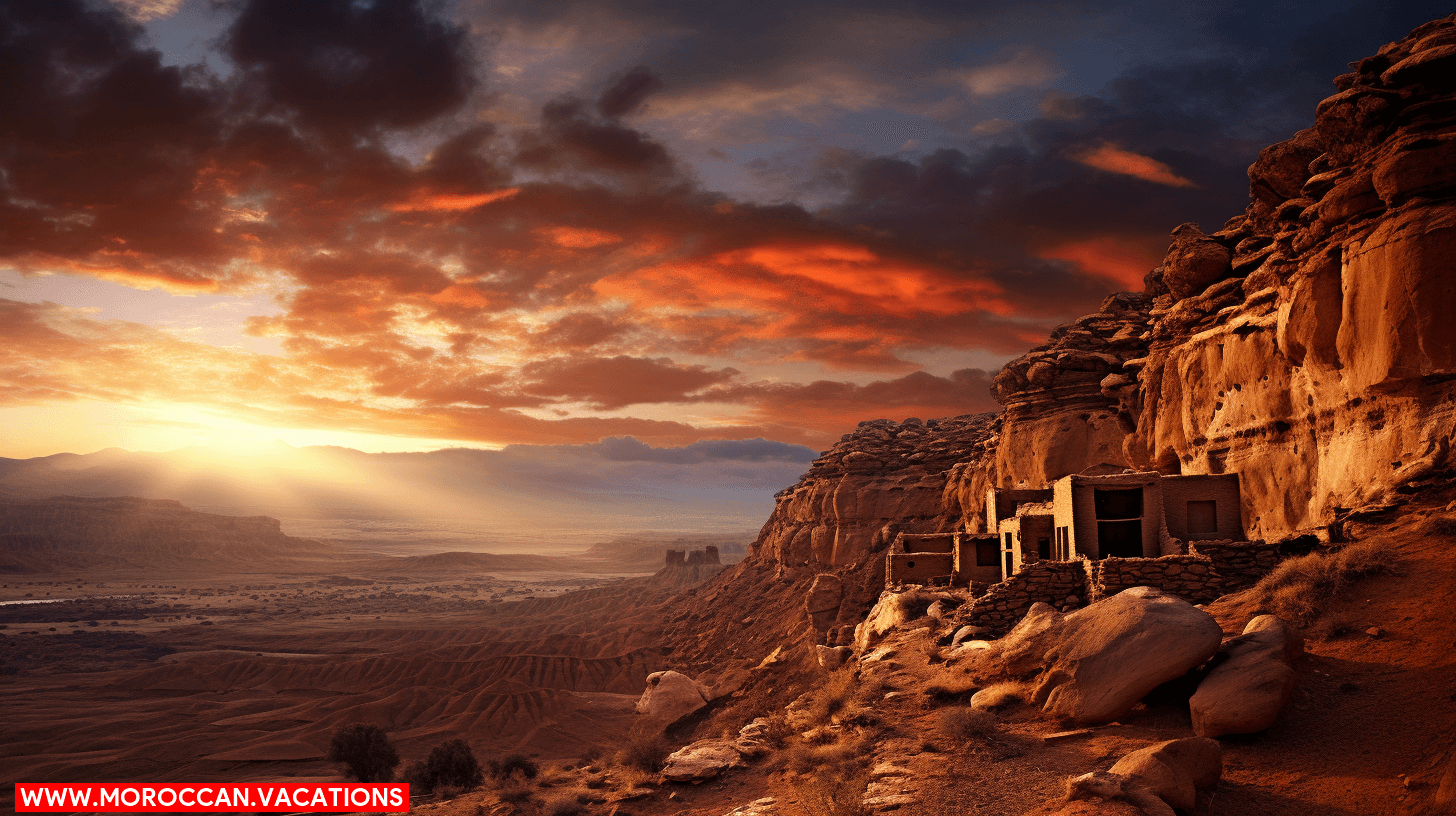

As you look towards the future of Moroccan design, you’ll see it’s poised to continue its exciting blend of tradition and innovation. The key lies in sustainable practices and design innovation, merging old-world artistry with new-world sensibilities. This fusion not only preserves the rich heritage but also paves the way for a more sustainable future.
Design innovation is at the forefront, with designers incorporating advanced technologies and eco-friendly materials into their work. They’re pushing the boundaries of what’s possible, creating designs that are as functional as they are beautiful.
Sustainable practices are also becoming increasingly important. From sourcing locally produced materials to employing traditional construction methods that minimize environmental impact, Moroccan design is leading the way in sustainable design practices.
This combination of tradition and innovation, sustainability, and design excellence is what’s shaping the future of Moroccan design. It’s a future that respects the past while embracing the possibilities of the future. As you step into this evolving landscape, you’ll find a world where design freedom is not just encouraged but celebrated. So, keep your eyes open and your mind ready for the exciting journey ahead.
Introducing Ayoub Karbachi, a brilliant wordsmith and curator of the Moroccan Vacations website. Prepare to immerse yourself in mesmerizing narratives and extraordinary moments, as he unveils the allure of Morocco's captivating destinations like never before.
Related Articles
Marrakesh's Historical Gates: Portals to the City's Past
Bab Agnaou: The Gateway to Marrakesh's Royal Past Instagram Image by: @moroccoholiday_ Step into the captivating city of Marrakesh through its historical gates, like portals to a bygone era. These majestic entrances, such as Bab Agnaou and Bab Doukkala, beckon you...
Marrakesh's Medinas: A Tapestry of History and Architecture
The Origins of Marrakesh's Medinas Step into the lively streets of Marrakesh's medinas and immerse yourself in a captivating tapestry of history and architecture. Discover the vibrant souks, where artisans showcase their local crafts, and let the hidden charms of the...
The Impact of French Colonial Architecture in Marrakesh
Historical Background of French Colonial Influence Do you ever wonder how French colonial architecture shaped the vibrant city of Marrakesh? From the grand facades of government buildings to the intricate details of private residences, the impact of French design is...

